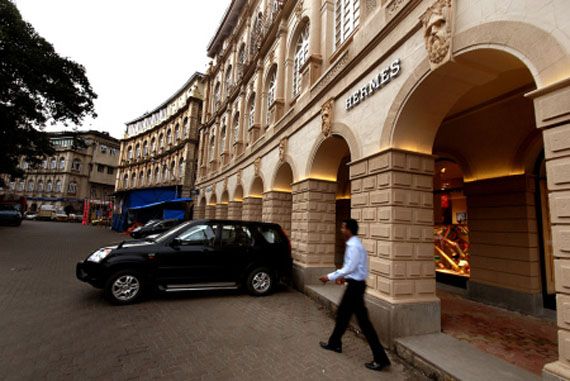
India has passed legislation allowing 100% foreign direct investment in retail stores for the first time. But given its complex landscape, is one change significant enough to start a revolution?
An economy that has produced more than 200,000 millionaires, trailing only the United States and China, according to Reuters. Despite such affluence, the region only accounts for only half a percent of the global luxury market ($846 million), as compared to Greater China, which accounts for 10 percent of the very same pie ($17 billion).
India is without one single Tiffany & Co store. Louis Vuitton – an arguable benchmark in the case of luxury retail – has only three stores in India, all three of which are located within upscale hotels or luxury malls. Hermès is currently the only luxury brand in the country to have a stand-alone store at street level, following this year’s opening in Horniman Circle, Mumbai.
The complexity of India’s luxury retail landscape makes it difficult to predict whether or not this change in ownership legislation will have a rapid impact on store openings. Product import duties in India hover at 30 percent, real estate is heavily regulated, existing retail infrastructure is non-existent and potential street-level environments are often unkempt. Challenges not addressed by the sudden ability to set-up company owned shops.
“The challenge is infrastructure. Luxury requires an ecosystem,” identified Anand Ramanathan, manager at KPMG Advisory. “It’s pointless having a luxury mall on a road that is potholed. Even the so-called ‘luxury malls’ in India are not really luxury. They have issues with basic infrastructure, with training of staff, it’s just not a luxury experience.”

Further inhibiting the potential for change are the behaviours of Indian luxury consumers, which are not necessarily geared to support local retail. India’s affluent have developed a habit of purchasing goods overseas, where they find the selection more diverse and the costs significantly lower, as a direct result of the underdeveloped state of domestic luxury retail.
As business in domestic stores remains slow, buying becomes cautious and ranges become limited. Particularly ironic as it then further inhibits the potential for growing local sales. And range is always going to be a sticking point for luxury brands, as the Indian consumer demonstrates significant disparity in taste, to those consumers in the west, meaning that products that work in Paris, won’t necessarily work in Pune.
The last landmark change in legislation was passed in 2006, allowing 51 percent FDI in single brand retail and resulting in the entry of more than 50 global brands with local partners in India, according to WWD. It will be interesting to see if last week’s announcement rallies the same level of interest and activity from international luxury brands, given the array of challenges market entrants will still face.
That said, it seems entirely plausible that these factors can be overcome – or at the very least managed – in the future. Luxury conglomerates now have a much greater scope to create their own retail destinations in India and begin to plant the seeds of desire, which will hopefully result in the next generation of affluents aspiring to buy their products.
If brands move towards directly owned and operated stores, they will begin to increase their internal understanding of complex real estate regulations and position themselves more strongly for future expansion. The creation of luxury retail precincts and street-level destinations – driven by a potential alliance of luxury brands entering the market independently – could help to solve problems associated with a lack of eco-system and help to create the correct environment in which Indians can experience true luxury.
The local market will benefit from brands commanding a more intimate understanding of local retail and developing both marketing and products to best suit the region. With any luck, consumers will also benefit from more competitive pricing and a diverse range of goods and services.
Speaking with Reuters at the time of the Mumbai launch, president of Hermès India, Bertrand Michaud, made the remark: “It’s difficult, it’s frustrating, to do business here. Real estate regulations, bureaucracy, it takes years to set up office, the goods sit at customs for months. I wish they would make it easier.”
And whilst the bureaucracy and taxes may remain, India may be that one crucial step closer to ‘making it easier’ for luxury brands to invest in real estate and be present in a market rife with opportunity, without ceding control of brand image and operations to distribution partners. Maybe, just maybe, this change and its resulting developments, will ignite a system of functionality and demand for luxury goods, reflective of India’s exponentially growing wealth.














